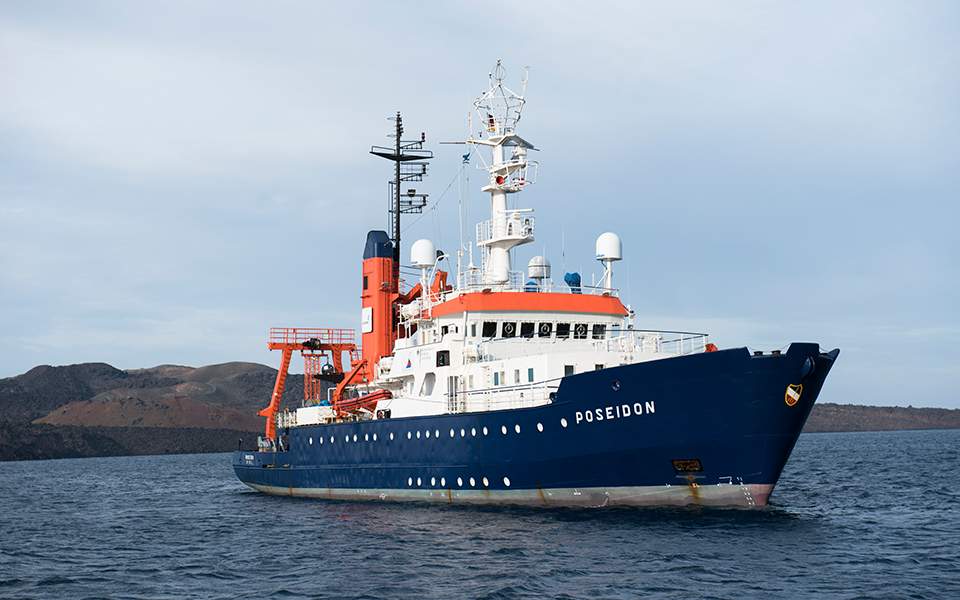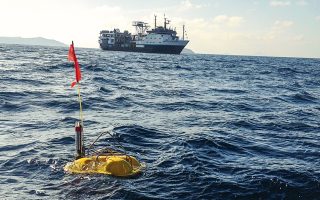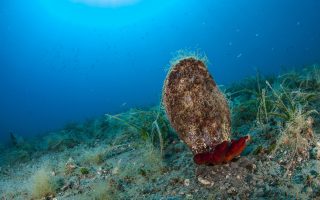Studying Santorini’s Kolumbo submarine volcano

Evi Nomikou got up before dawn for the early shift. The ship was completely quiet. She spent a few minutes looking at the tranquil sea, amazed at what an unexpected gift the fine weather was for late October. Her tough mission could only be carried out in such clement conditions.
At the time of our interview, the Athens University assistant professor of physical geography and geological oceanography had spent 10 days at sea northeast of Santorini on the oceanographic research vessel Poseidon on a mission that ended on October 28.
The rest of the crew consisted of scientists from the Helmholtz Center for Ocean Research Kiel (GEOMAR) and the universities of Hamburg and Bologna. As part of the THESEUS research program, headed by Dr Jens Karstens (GEOMAR), they were studying how underwater volcanic eruptions cause tsunamis and recording seismic activity at the submarine volcano of Kolumbo off the coast of the island of Santorini in the southeastern Aegean.
“This is the first time that a 3D seismic experiment is being conducted on an active submarine volcano in Greece,” said Nomikou, explaining that the purpose of the six underwater seismometers anchored around Kolumbo (Europe’s most active submarine volcano which has a completely separate magma chamber to the Santorini volcano), in combination with sound waves, will give the scientists three-dimensional images of the volcano.
“The sound waves penetrate the volcano and allow us to see its exact dimensions and what is taking place inside it,” said Karstens. “This is the first time, in fact, that a seismograph has been installed inside the volcano. Up until now, when we conducted seismic experiments, we only had a two-dimensional view of what was going on under the surface of the seabed. Now we can see it in three dimensions and in great detail.”
The Poseidon had more than 16 cables dragging in its wake and the good weather and sea conditions were very favorable for this specific seismic experiment.
Kolumbo exploded in 1650, causing a massive crater 2,500 meters wide and 500 meters deep, as well as a tidal wave (or tsunami) that struck the eastern and southern coast of Santorini. How tsunamis occur as a result of submarine volcanic explosions – an area that has been studied intensively – is the main subject of the ongoing research in the area. There is, however, another area of interest, and that is drawing up a 2D seismic profile of the inside of the Santorini caldera as well as in the area around the volcano stretching to the Amorgos Basin. This will complement existing seismic data in a proposal for exploratory submarine research drilling as part of the Integrated Ocean Drilling Program (IODP). The proposal is for a project to study and record the volcano-tectonic evolution of the most active region in Greece, the area between Christiana, Santorini and Amorgos. Drilling is scheduled to take place in 2023 if the scientific proposal is approved.





